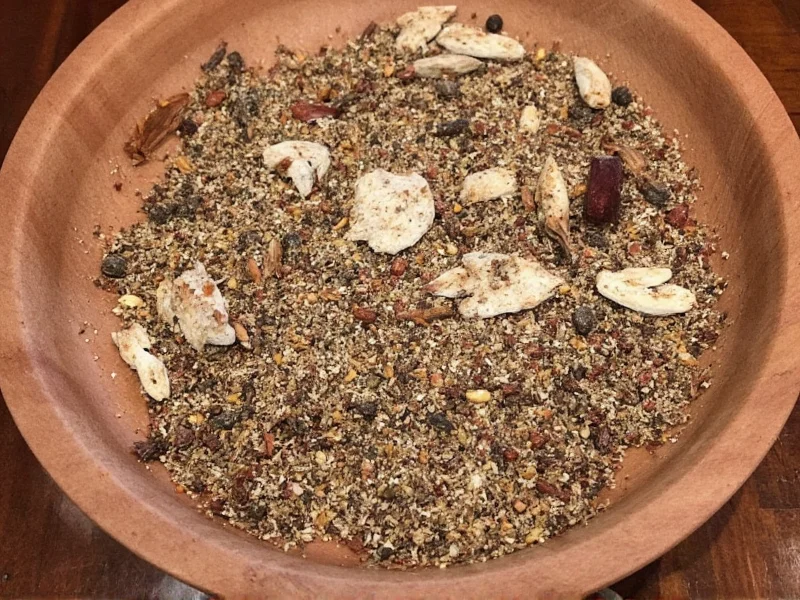Unlike liquid maple syrup, smokehouse maple seasoning offers concentrated maple flavor with smoky depth in a convenient dry form. This makes it ideal for dry rubs, marinades, and seasoning blends where liquid ingredients would interfere with texture or cooking processes. The seasoning typically combines pure maple sugar or dried maple extract with smoked salt, paprika, garlic powder, onion powder, and black pepper.
Understanding Smokehouse Maple Seasoning Composition
Smokehouse maple seasoning contains several key components that create its distinctive flavor profile. The foundation is pure maple sugar or dehydrated maple syrup, which provides authentic maple sweetness without moisture. This gets combined with natural smoke flavor, usually from smoked salt or smoked paprika, creating that essential campfire essence.
Additional ingredients commonly found in quality smokehouse maple seasonings include:
| Ingredient | Flavor Contribution | Functional Purpose |
|---|---|---|
| Maple sugar | Rich caramel sweetness | Dissolves evenly without moisture |
| Smoked paprika | Deep smoky notes | Provides visual appeal and smoke flavor |
| Garlic powder | Savory umami depth | Enhances overall flavor complexity |
| Onion powder | Sweet aromatic base | Builds foundational flavor |
| Black pepper | Subtle heat | Balances sweetness |
Optimal Cooking Applications for Smokehouse Maple Seasoning
Understanding how to use smokehouse maple seasoning properly makes the difference between exceptional results and disappointing dishes. The dry format works particularly well for applications where liquid maple syrup would cause problems.
Meat preparation represents the most popular use case for smokehouse maple seasoning. Apply generously to salmon fillets before pan-searing, creating a beautiful crust with complex flavor. For pork chops or tenderloin, combine the seasoning with a little olive oil to form a paste that adheres well during grilling. The sugar content helps develop appealing caramelization without burning that often occurs with liquid syrups.
Chefs recommend using smokehouse maple seasoning in dry brines for optimal flavor penetration. Simply coat proteins with the seasoning and refrigerate uncovered for 4-12 hours before cooking. This technique works exceptionally well for chicken thighs and wings, yielding crispy skin with deep maple-smoke flavor throughout.
Recipe Ideas Featuring Smokehouse Maple Seasoning
Smokehouse maple seasoning shines in various dishes beyond simple meat preparation. Consider these creative applications:
- Maple-Smoked Roasted Carrots: Toss peeled carrots with olive oil and 1-2 teaspoons smokehouse maple seasoning per pound. Roast at 400°F until tender and caramelized.
- Breakfast Potatoes: Combine cubed potatoes with 1 tablespoon smokehouse maple seasoning per serving before roasting. The seasoning creates a sweet-savory crust that complements eggs perfectly.
- Maple-Smoked Baked Beans: Add 2 tablespoons to your favorite baked bean recipe for authentic campfire flavor without thinning the sauce.
- Grilled Corn: Mix with softened butter and spread on corn before grilling for sweet smoky flavor that doesn't burn.
For salad applications, create a simple vinaigrette by whisking 2 parts olive oil with 1 part apple cider vinegar and 1 teaspoon smokehouse maple seasoning per serving. This dressing works particularly well with bitter greens like arugula or radicchio.
Substitutes When Smokehouse Maple Seasoning Isn't Available
When you need smokehouse maple seasoning substitute options, consider these alternatives based on your specific recipe requirements:
For dry rub applications, combine equal parts pure maple sugar (or brown sugar) with smoked paprika and a pinch of garlic powder. This mixture approximates the sweet-smoky balance though it lacks the complete flavor profile. When using regular maple syrup instead, reduce other liquids in your recipe by 1-2 tablespoons per ¼ cup of syrup added to maintain proper consistency.
Homemade smokehouse maple seasoning requires just five minutes to prepare. Blend ¼ cup pure maple sugar, 2 tablespoons smoked paprika, 1 tablespoon garlic powder, 1 tablespoon onion powder, and 1 teaspoon black pepper. Store in an airtight container for up to six months. This DIY version lets you adjust the smoke-to-sweet ratio according to personal preference.
Storage Recommendations and Shelf Life
Proper storage maintains smokehouse maple seasoning quality and flavor intensity. Keep the seasoning in an airtight container away from heat and direct sunlight. Glass jars with tight-sealing lids work better than plastic containers, which can absorb odors over time.
Well-stored smokehouse maple seasoning retains optimal flavor for 12-18 months. The maple sugar component may begin to harden after this period, though the seasoning remains safe to use. To test freshness, rub a small amount between your fingers—if you detect a faint maple aroma, it's still viable for cooking. Avoid storing near strong-smelling spices like cumin or curry powder, which can alter the delicate maple notes through odor transfer.
Distinguishing Smokehouse Maple Seasoning from Similar Products
Understanding smokehouse maple seasoning vs regular maple syrup helps prevent recipe failures. The dry seasoning provides concentrated flavor without moisture, making it suitable for dry rubs and applications where liquid would interfere. Regular maple syrup contains 33% water content, which prevents proper browning and can cause burning during high-heat cooking.
Compared to liquid smoke products, smokehouse maple seasoning offers balanced sweetness that counters liquid smoke's harsh intensity. Liquid smoke alone creates an artificial campfire flavor that overwhelms dishes, while the maple component in smokehouse seasoning provides natural sweetness that mimics wood-smoked cooking.











 浙公网安备
33010002000092号
浙公网安备
33010002000092号 浙B2-20120091-4
浙B2-20120091-4